Evaluating the Seven-Star Status of Burj Al Arab
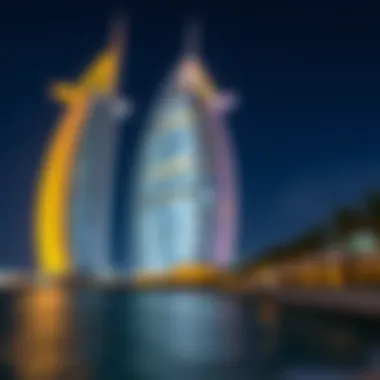
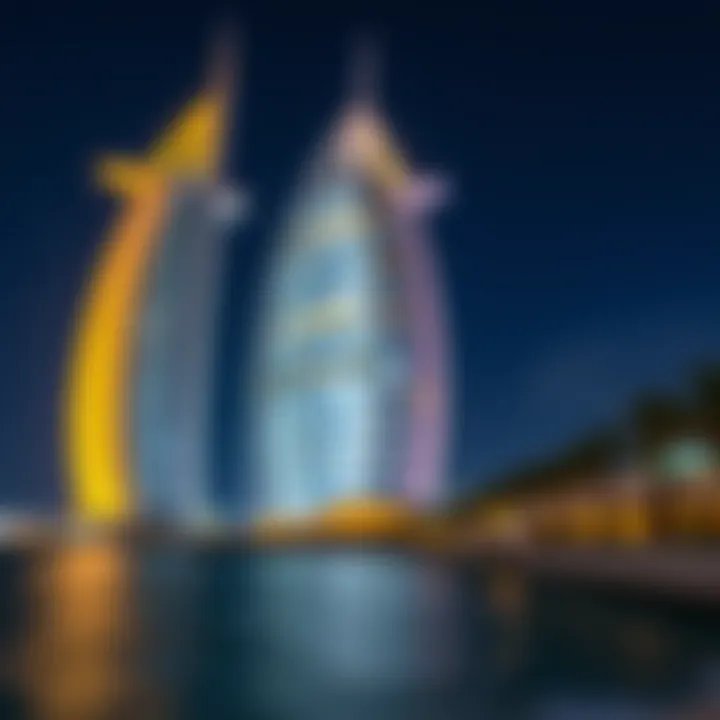
Intro
Burj Al Arab stands as a beacon of luxury and extravagance in Dubai, captivating visitors and residents alike with its unique sail-like silhouette. Its reputation has been propelled into the stratosphere by the claim of being a seven-star hotel, which begs the question: is this nomenclature a clever marketing ploy or does it hold water in reality?
To truly grasp the nuances around the Burj Al Arab's star status, it's beneficial to dissect various elements, including architectural brilliance, unparalleled hospitality services, and how star ratings in the hospitality sector are defined. This journey will not only involve scrutinizing the hotel's physical and service attributes but also considering its historical context and juxtaposing it with global standards of luxury.
In an age where consumer skepticism runs high, understanding whether Burj Al Arab genuinely earns its seven-star title or if it exists only as a fabricated marketing marvel is crucial. Before we leap into this analysis, let’s first navigate through some significant trends that have influenced the luxury hospitality market, spotlighting those elements contributing to the Burj Al Arab's grandiose reputation.
Market Trends
Current Market Analysis
The luxury hotel market has experienced profound shifts in recent years. In 2023, an upsurge in affluent travel has been noticeable, driven by an ever-growing population of high-net-worth individuals. Despite economic fluctuations, the demand for opulent experiences remains peaking, especially in marquee locations such as Dubai. Prominent features like exceptional design, personalized service, and exclusive offerings are no longer luxuries; they are must-haves.
Burj Al Arab has undoubtedly carved its niche by adhering to these high standards. From its opulent decor to world-class dining options, the institution stands tall among its competitors—not just in Dubai, but globally. Marketers champion experiences over mere accommodation, and the Burj seems to thumb its nose at those who dare to question whether a hotel can indeed be 'extra' ordinary.
Future Predictions
Looking ahead, the trajectory for luxury accommodations like the Burj Al Arab seems bright but laden with emerging challenges. The rise of boutique hotels which spotlight individuality and unique experiences could pose a threat to the homogeneous luxury offerings of larger establishments. Moreover, as sustainability practices gain traction, pressure mounts on all hotels to adapt accordingly. This pivot toward ecological responsibility may open new avenues for Burj Al Arab to differentiate itself further.
However, one aspect to keep an eye on is how established luxury brands integrate technology without sacrificing the personal touch. Balancing between smart technology and traditional service could be the ticket to remaining relevant in an ever-changing landscape.
Luxury is not about who you are, but the experiences you curate.
As we examine the monetary aspects tied to ownership and investment in the realm of luxury hotel properties, the insights could guide stakeholders like investors and real estate agents in making informed decisions.
Prelims to Burj Al Arab
The Burj Al Arab, rising gracefully from the Arabian Gulf, is more than just a luxury hotel; it has become an icon of contemporary architecture and elegance in Dubai. For anyone exploring the realm of high-end hospitality, understanding this structure is essential. It represents the melding of innovative design with a dedication to ultimate opulence. When one talks about the essence of luxury in Dubai, the Burj Al Arab inevitably emerges as a focal point, while also sparking discussions about its acclaimed seven-star rating.
Significance in Dubai's Skyline
The silhouette of the Burj Al Arab is unmistakable. Standing at 321 meters, it redefines the extents of not just Dubai's skyline but also the very concept of luxury accommodations. This structure, which resembles the sail of a ship, captures both the heritage of the region and its modern ambitions. Positioned on its own artificial island, the Burj is a testament to what seems possible when ambition meets vision. Its presence attracts tourists, investors, and architects alike, making it an important landmark in understanding urban development in Dubai.
- Tourism Magnet: This hotel garners millions of visitors annually, drawn not just to its services but to its sheer presence.
- Cultural Symbol: Burj Al Arab often gets associated with the rapid growth and international allure of Dubai, demonstrating its cultural significance beyond mere hospitality.
Thus, if one is examining the luxury market or engaging with high-end tourism in Dubai, ignoring the Burj Al Arab is not an option. It plays a pivotal role in shaping perceptions and expectations from luxury hotels across the globe.
Overview of Architectural Design
A closer look at the Burj Al Arab reveals a masterclass in architectural craftsmanship. Designed by Tom Wright of the WKK Architects, its construction began in 1994 and culminated in December 1999. Its distinctive structure is not merely aesthetic—each element has a purpose, showcasing ingenuity in engineering.
- Innovative Use of Materials: The hotel is crafted using a combination of steel, glass, and luxury finishing touches that hint at classic Arabian design while embracing modernity.
- Sustainable Features: Even in luxury, considerations for sustainability can be found. The building's design incorporates energy-efficient systems that underline a more environmentally-friendly approach to opulence, which is crucial in today’s context.
The Burj Al Arab’s architectural journey reaffirms the delicate balance between function and art. When scrutinizing its claims to a seven-star reputation, understanding its design becomes crucial; it embodies not just aesthetics but a commitment to providing top-tier guest experiences.
"The Burj Al Arab is more than just a hotel; it's a bold declaration of Dubai's ambition and grandeur in the global scene."
In sum, the significance of the Burj Al Arab extends beyond its physical stature. It stands as a cultural and architectural landmark, shaping both local and global narratives around luxury and hospitality in the modern age. Its seven-star rating, often debated, echoes the expectations one has from such a monumental establishment.
The Concept of Star Ratings in Hotels
Understanding the framework of star ratings in the hotel industry is paramount when we discuss establishments like the Burj Al Arab. Star ratings serve not merely as accolades but as benchmarks that potential guests often rely on to gauge the quality and reliability of accommodations. They shape expectations, provide a quick reference point, and can dramatically influence bookings and subsequently, a hotel’s revenue.
Understanding Hotel Classification
Classification systems for hotels are fundamentally designed to categorize accommodations based on specific qualities. It is not purely about luxury; understanding how hospitals feature in the star rating game requires a look behind curtains.
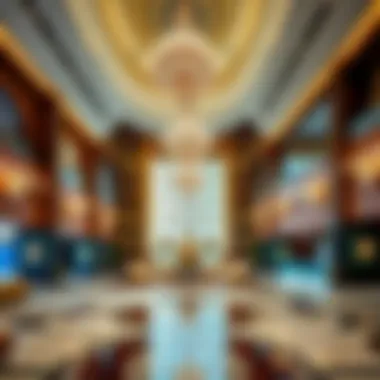
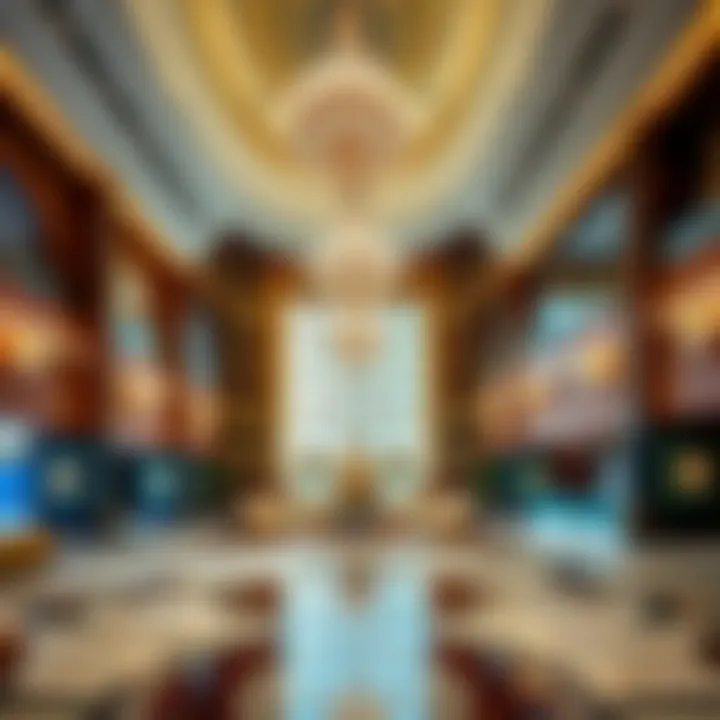
- Service Quality: This includes the attentiveness of the staff and the types of guest services offered.
- Room Features: Considerations such as air conditioning, size, and additional amenities like minibars or coffee-makers are factored in.
- Dining Options: Availability of onsite restaurants and the quality of food served can often bump ratings up.
- Additional Facilities: Features such as pools, spas, and gyms also play into the classification.
Classifications can vary significantly by country, reflecting cultural expectations and economic factors.
Criteria for Rating Systems
The criteria that form the basis of hotel star ratings are grounded in several assessments, some of which include:
- Facility Conditions: Hotels must meet certain maintenance standards. A carpet might fray a bit, but a cracked pool tile? That could be a dealbreaker.
- Guest Experience: Surveys and reviews often influence ratings. The more stars a hotel has, the more likely they are scrutinized by a harsher lens.
- Regulatory Compliance: Many countries have official bodies that dictate standards and conduct periodic inspections for regulatory licenses.
It's essential to consider who decides the scores and what factors they deem most valuable.
Global Variations in Hotel Ratings
Across the world, star ratings can be inconsistent, which adds another layer of complexity.
- European Standards: The European Hotel Classification system tends to emphasize service and dining options more heavily. A lack of in-house dining options might keep a hotel from reaching five stars.
- U.S. System: American classifications often highlight room size and overall guest experience, meaning hospitality might take precedence over features.
- Asian Standards: In Asia, hotels often provide unique cultural experiences in addition to traditional amenities. A solid example would be Japanese ryokans that focus on heritage along with comfort.
Understanding these distinctions is not just academic but practical for investors and expatriates considering hospitality ventures. Each system is reflective not just of the local market but of the values that the society places on hospitality and service.
The star system indicates more than opulence; it reveals an intricate dance between expectations, service, and cultural standards.
Burj Al Arab: The Seven-Star Claim
The Burj Al Arab, standing tall on its own artificial island, has gained notoriety for its audacious claim to a seven-star status. This distinction is not an official rating but rather a way to symbolize the exceptional luxury and exclusivity this hotel promises. Despite not having formal recognition from any governing bodies, the seven-star designation serves as an intriguing symbol of aspiration within the hospitality industry. By examining the nuances of this claim, we uncover the layers of opulence and marketing genius that contribute to the hotel's esteemed reputation.
Origin of the Seven-Star Title
The term
Luxury Offerings and Unique Features
The Burj Al Arab is not just a hotel; it's a landmark in luxury, offering experiences that are often considered unattainable elsewhere. This section highlights the importance of luxury offerings and unique features in shaping the hotel's identity, exploring how they contribute to its seven-star reputation. By examining exclusive suite accommodations, gastronomic excellence, and unparalleled amenities, we aim to uncover what makes the Burj Al Arab not just a stay, but an experience worth talking about.
Exclusive Suite Accommodations
Royal Suite Experience
The Royal Suite in Burj Al Arab is the pinnacle of opulence, occupying the 25th floor and boasting a staggering 8,396 square feet of space. This suite is designed to be nothing less than a palace in the sky, featuring a stunning decor that combines traditional Arabic artistry with modern luxury, and the expansive windows offer panoramic views of the coastline.
One of the standout characteristics of the Royal Suite is its private elevator, ensuring an exclusive arrival experience. With a lavish bedroom adorned with silk and velvet fabrics, and a large living area that could host an intimate gathering or a private party, it’s easy to see why this suite is so sought after. The benefits of this choice lie in both privacy and grandeur—ideal for ultra-high-net-worth individuals or dignitaries seeking discretion along with luxury.
However, while the grandeur is evident, it's worth mentioning that the price tag can leave a dent in the wallet: rates can soar to several thousand dollars per night. That might make some guests think twice before booking.
Interior Design Elements
The interior design elements of the Burj Al Arab aren’t merely decor; they weave a narrative of sophistication and elegance. The use of materials like gold leaf, marble, and plush carpets not only creates a visual feast but also embodies the luxury that the hotel claims.
A notable feature is the atrium, which is one of the tallest in the world, stretching 180 meters high. This allows natural light to flood the space, enhancing the overall ambience. The design choices reflect a cultural homage while also catering to modern tastes, making it appealing to a diverse international clientele.
The trade-off, however, is that such intricate designs might feel overwhelming for some guests who prefer minimalistic aesthetics. The heavy use of opulence can have mixed reactions depending on personal tastes.
Gastronomic Excellence
World-Class Dining Options
Dining at the Burj Al Arab is an event in itself, with a range of world-class options that cater to various palates. From the underwater restaurant, Al Mahara, which features a stunning aquarium backdrop, to the signature restaurant, Al Muntaha, perched on the 27th floor with breathtaking views of the Dubai skyline, each dining experience is designed to be unique.
The key characteristic here is the level of creativity and innovation that chefs bring to the table, often collaborating with global culinary experts. This commitment to quality and presentation is a significant draw for gastronomes and casual diners alike.

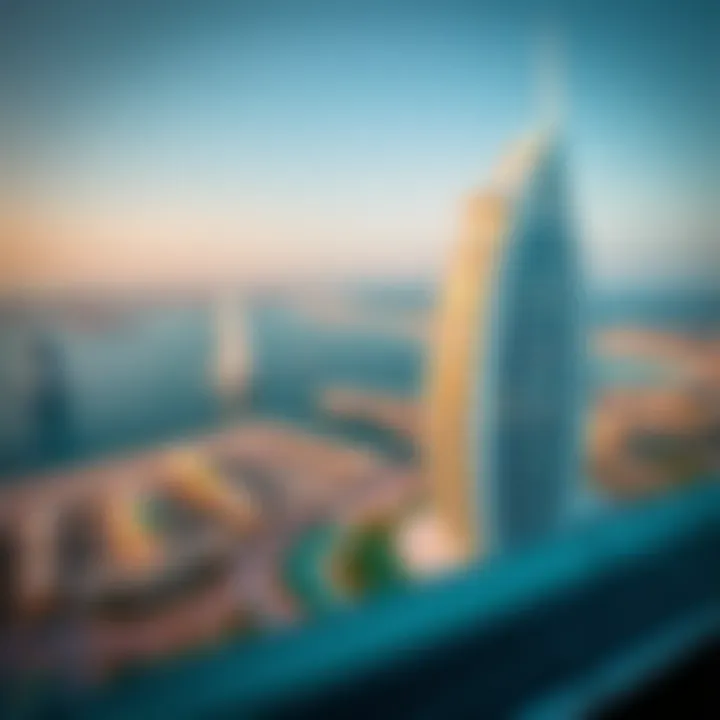
Yet, the exclusivity that defines these dining options often comes with high costs, which can be a deterrent for patrons looking for an everyday dining experience instead of a once-in-a-lifetime splurge.
Signature Culinary Experiences
Signature culinary experiences go beyond traditional dining, incorporating elements that create lasting memories for guests. These are unique offerings such as chef’s tables and personalized menus that reflect individual tastes and preferences, showing a commitment to guest satisfaction.
For example, private dining experiences can be arranged where guests can sample bespoke dishes crafted specifically for them, enhancing the feeling of exclusivity. This approach is particularly appealing to those celebrating special occasions or seeking to impress clients.
However, the planning and coordination required for these experiences can be cumbersome, potentially leading to miscommunication or forgetfulness, which may dampen the expected luxury experience.
Amenities and Services
Private Beach Access
The Burj Al Arab offers its guests private beach access, a amenity that significantly enhances the appeal of the hotel. This exclusivity allows guests to unwind on pristine shores with stunning views of the Arabian Gulf.
The beach is equipped with cabanas and beachside service, adding to the luxury experience. The direct access means guests can enjoy the sun and sea without the distractions typically found in public areas. Still, a potential disadvantage is that the beach can be crowded during peak seasons, straying from the serene atmosphere some guests hope to find.
Personal Butler Services
One of the defining features that sets Burj Al Arab apart is its personal butler service, available 24/7 to address guests' needs. Each guest is assigned a trained butler who is dedicated to providing an unparalleled level of service, from arranging dining reservations to ensuring a flawless stay.
The hallmark of this service is the attention to detail; guests often report feeling like royalty, with requests being met seamlessly. This feature reinforces why the Burj Al Arab is touted as the epitome of luxury hospitality. However, reliance on such a personalized service may lead to expectations that could be hard to meet consistently, especially during high-occupancy periods.
In summation, the offerings and unique features of Burj Al Arab play a pivotal role in crafting the hotel’s reputation as a seven-star destination. While the luxuries can lead to unforgettable experiences, they also come with complexities that challenge the perception of perfect service.
The synergy of these luxury elements—exclusive accommodations, culinary excellence, and attentive services—culminates in a distinctive experience that undeniably appeals to a high-caliber clientele seeking more than just a place to rest their head.
Public Perception and Media Portrayal
In evaluating the Burj Al Arab and its so-called seven-star reputation, understanding public perception and media portrayal is crucial. This hotel isn’t just a building; it symbolizes luxury and opulence. How people perceive it can shape their expectations and experiences. The Burj Al Arab has been positioned in the media not merely as a hotel but as a landmark, a beacon of wealth and extravagance in Dubai’s sprawling desert landscape.
Advertising campaigns and media coverage amplify this perception. The marketing strategies crafted by the hotel have played an instrumental role in sculpting its image.
Marketing Strategies
The marketing of the Burj Al Arab has been nothing short of masterful. Its strategy relies heavily on the promise of exclusivity and elite status, appealing to affluent travelers seeking something extraordinary. Much of the portrayal stems from slick advertising campaigns that focus on the hotel’s unique architecture, lavish amenities, and personalized services. These campaigns often feature striking visuals that evoke feelings of grandeur.
One such strategy is the use of high-profile partnerships with luxury brands. Collaborations with prestigious brands enhance the hotel's aura, signifying that a stay isn’t just about accommodation—it’s about having a luxurious lifestyle experience.
Having such marketing strategies in place not only provides visibility but also reinforces the hotel’s unique position in the competitive landscape of luxury hospitality. This carefully crafted narrative breeds a certain allure that influences travelers’ decisions, often leading them to believe that a visit to Burj Al Arab is almost an obligation in their pursuit of luxury.
Visitor Experiences and Reviews
While marketing creates an enticing picture, the real story often unfolds through visitor experiences and reviews. The perspectives of those who have stayed at the Burj Al Arab are vital in painting an accurate picture of what it truly offers. Reviews across platforms like TripAdvisor and Yelp showcase a diverse range of opinions. Some visitors glowingly describe their time as ‘life-changing’ and ‘unforgettable,’ citing the exceptional service, tastefully designed interiors, and world-class dining options.
However, not all feedback is wrapped in glittering praise. Some reports mention that the actual experience may not align with the towering expectations set by the marketing. Common critiques include the cost of services and amenities, which some feel do not correspond to the actual value provided.
"To understand Burj Al Arab is to navigate the chasm between its marketed image and the grounded reality presented by guests."
In this light, reviews serve as a double-edged sword—while they can elevate the hotel's image, they can also expose gaps between expectation and reality. This highlights the importance of sifting through reviews meticulously, as they can reveal not just the glitz but also insights that can shape potential travelers' decisions.
Understanding public perception alongside how the media crafts narratives about the Burj Al Arab illuminates the broader conversations around luxury hospitality. It's not just about how the hotel functions but how it is seen and the stories told within its walls.
Comparative Analysis with Other Luxury Hotels
Comparative analysis with other luxury hotels is a vital aspect for understanding the status and reputation of the Burj Al Arab. By examining different offers and experiences across similar high-end accommodations, one can find practical insights about what sets these establishments apart. Dubai is a melting pot of opulence, and the competition between its luxurious hotels holds significant sway over the city’s hospitality landscape.
Grasping how Burj Al Arab measures up against its competitors not only sheds light on its distinctive features but also illuminates the expectations of prospective guests, astute investors, and industry analysts. After all, knowing the strengths and weaknesses relative to other properties is crucial for any establishment aiming to maintain supremacy in the luxury sector.

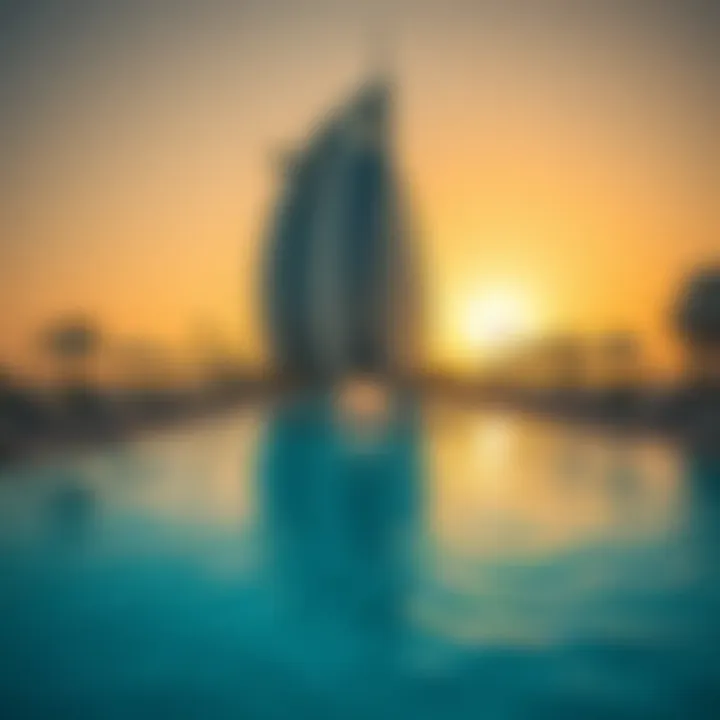
Regional Competitors in Dubai
In Dubai, several luxury hotels vie for the attention of discerning travelers, showcasing extravagant amenities and service standards that rival those of the Burj Al Arab. Some of the most prominent competitors include:
- Atlantis The Palm: An iconic hotel that features an underwater aquarium and a range of water activities. It is also known for its family-friendly atmosphere, which differs from the more exclusive aura of Burj Al Arab.
- Jumeirah Al Naseem: Situated along the Arabian Gulf, this luxury hotel combines modern design with traditional Arabian flair, offering guests a vibrant atmosphere, diverse dining experiences, and proximity to the Wild Wadi Waterpark.
- The Address Downtown: Known for its elegant interiors and central location near the Burj Khalifa, this hotel provides a different luxury experience with a focus on contemporary chic aesthetics.
While each of these hotels offers unique attractions, Burj Al Arab often stands out due to its remarkable architectural structure and strictly tailored luxury services. Desiring an exclusive experience, many guests find that it more than holds its own against this impressive lineup of regional competitors.
International Luxury Hotels
When taking a broader lens to the global stage, the Burj Al Arab faces substantial competition from other renowned luxury hotels worldwide. Some notable mentions include:
- Ritz Paris: A paragon of Parisian elegance that boasts historic charm and quintessential French cuisine. The Ritz is a symbol of luxury, renowned for its timeless service and exquisite offerings.
- The Plaza Hotel, New York: A historic landmark synonymous with class, The Plaza merges lavish accommodations with proximity to iconic New York attractions.
- The Savoy, London: This iconic hotel combines luxury with a rich heritage, featuring breathtaking views of the Thames and offering unparalleled service.
By comparing the Burj Al Arab to these international giants, one might observe how differently luxury is interpreted across cultures and locations. While some focus heavily on lavish amenities, others prioritize cultural heritage and history. Nevertheless, examining these establishments enhances the understanding of what factors truly define the essence of luxury in hospitality.
The Burj Al Arab competes not just with nearby hotels but also with globally recognized establishments, each defining luxury through its unique lens.
In the highly competitive arena of luxury hospitality, such comparative analysis equips stakeholders with the knowledge needed for strategic planning and recognition of market trends. It emphasizes adapting to individual preferences while maintaining the high standards reputations necessitate. As we explore further, it becomes evident how the landscape of luxury hotels is consistently evolving and shaping the expectations of customers.
Cultural and Economic Impact
The cultural and economic impact of the Burj Al Arab reaches far beyond its iconic silhouette rising against the Dubai skyline. The hotel not only serves as a symbol of luxury but also as a cornerstone for the tourism industry in the UAE. This section delves into how the Burj Al Arab acts as a catalyst for tourism and its contributions to the local economy, framing our understanding of its broader implications.
Tourism Catalyst for Dubai
Burj Al Arab functions as more than just a place to stay. It attracts tourists worldwide, from curious travelers to high-profile dignitaries seeking opulence. The ultra-luxurious experience offered here captures the imagination and draws visitors, enhancing Dubai's reputation as a global travel hotspot.
- Iconic Status: Known globally as a symbol of affluence, the Burj Al Arab contributes significantly to Dubai's identity as a premier tourist destination. Many travelers plan their journeys to the UAE specifically to experience the hotel.
- Attraction: The hotel is not merely for overnight guests; its restaurants, bars, and lavish amenities tempt day visitors and event planners alike. A range of cultural and social events hosted at the hotel further amplifies its pull.
In essence, the Burj Al Arab does not just sit statically within the city; it vibrantly contributes to the life force of Dubai's tourism sector. The architectural wonder is a beacon drawing in millions of tourists, each eager to explore its splendor.
Economic Contributions to the Local Market
The economic influence of the Burj Al Arab extends well into various sectors, providing both direct and indirect benefits to the local economy. The presence of this seven-star establishment has catalyzed economic activity in profound ways.
- Job Creation: The hotel employs a substantial number of staff, ranging from hospitality professionals to support staff, contributing to the local job market. This employment not only aids families but increases overall spending power within the community.
- Boosting Local Businesses: Many smaller businesses, from suppliers to tourism companies, benefit from the hotel's high-profile status. Local products and services often see increased demand due to the influx of visitors to the hotel.
- Attracting Investment: The Burj Al Arab's significant popularity boosts investor confidence in Dubai's hospitality sector. New ventures and expansions can trace their interest back to the flourishing ecosystem fostered by such landmark projects.
In summary, the Burj Al Arab not only defines luxury in hospitality but acts as a linchpin in Dubai's economic landscape, reinforcing existing structures and paving the way for a vibrant future. Its cultural and economic contributions solidify its status as a vital component of the city’s ongoing story.
Culmination: The Truth About the Seven-Star Status
The discussion surrounding the seven-star status of the Burj Al Arab holds significant importance, especially in today’s competitive hospitality landscape. As luxury establishments strive to differentiate themselves, the criteria that label a hotel as a seven-star property invite both scrutiny and admiration. The Burj Al Arab, a towering symbol of opulence in Dubai, embodies the complexities of luxury hospitality and customer expectations.
Through this exploration, it becomes evident that the Burj Al Arab's claims are not merely rooted in physical grandeur but also in the curated experiences it offers to its guests. This blend of marketing prowess and exceptional service raises an intriguing question: does the perception of luxury transform the reality of what a seven-star hotel truly represents?
In examining these key elements, we can glean several benefits regarding the Burj Al Arab's reputation:
- Brand Recognition: The seven-star claim enhances its visibility and attracts a niche clientele seeking unparalleled experiences.
- Economic Impact: The hotel plays a pivotal role in tourism and local economy, bolstering Dubai's status as a luxury destination.
- Cultural Significance: The Burj Al Arab contributes significantly to the identity of modern Dubai, reflecting the ambitions and aspirations of its society.
By dissecting these factors, one can appreciate that luxury is not solely about the embellishments found in a hotel but how it resonates with visitors' expectations and dreams.
Summary of Findings
In summarizing our findings, it’s clear that the Burj Al Arab’s seven-star reputation stems from a combination of architectural innovation, tailored service, and strategic marketing. Unlike traditional five-star hotels, it pushes the boundaries of what luxury means by encapsulating a holistic approach to guest experience. This includes:
- Extravagant Accommodations: Each suite is a product of world-class design, filled with luxurious amenities designed for comfort.
- Unparalleled Service: The commitment to providing personal butler services fosters a sense of individualized care that’s rare in the hotel industry.
- Culinary Experiences: From signature dishes to Michelin-starred restaurants, the gastronomic offerings at the Burj Al Arab set the bar high for dining experiences.
While there are debates on the authenticity of the seven-star categorization, the hotel unquestionably reshapes conventional definitions of luxury.
Final Thoughts on Luxury Hospitality
In the grand scheme of luxury hospitality, Burj Al Arab stands as a paramount example of how prestige and perception can intermingle. It underscores that luxury should not be confined to star ratings but rather be defined through the experiences that linger long after a guest checks out. As more hotels strive to capture the essence of high-end living, the Burj Al Arab's legacy will continue to be a benchmark.
However, the onus remains on the hospitality industry to keep evolving. To stay relevant, hotels must not only concentrate on opulence but should also enhance the guest experience with authenticity and personal touch. The interplay between luxury and service is key, especially in a world where travelers increasingly seek memorable adventures over mere material excess.











